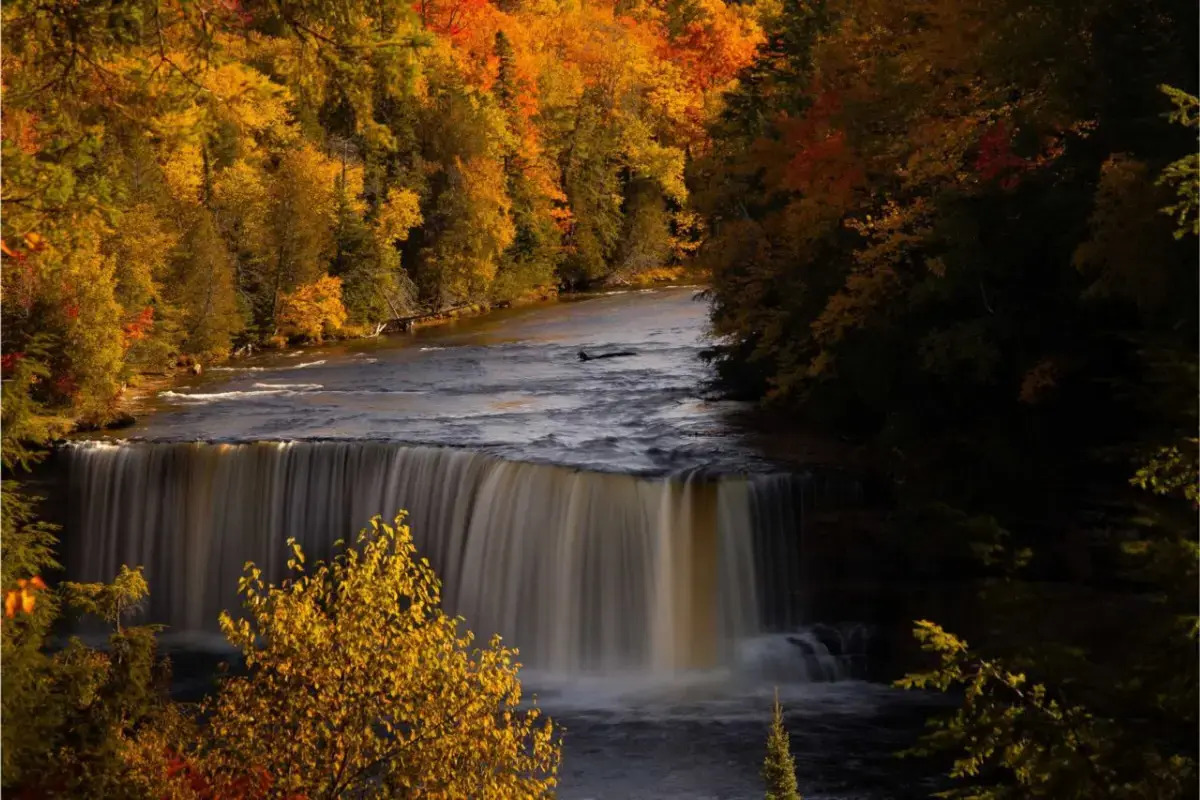Secrets Of Michigan’s Tahquamenon Falls Logging Camps

Have you ever wondered what life was like in Michigan's Tahquamenon Falls logging camps? Imagine waking up to the sound of axes and saws, surrounded by towering trees and the roar of the falls. These camps were bustling hubs of activity where loggers worked tirelessly to harvest timber. They lived in simple cabins, ate hearty meals, and faced the challenges of harsh weather. Despite the tough conditions, a strong sense of camaraderie and adventure thrived. Exploring the history of these camps offers a glimpse into the rugged lives of the loggers who played a crucial role in Michigan's logging industry.
Discovering the Hidden Gems of Tahquamenon Falls Logging Camps
Tahquamenon Falls, located in Michigan's Upper Peninsula, is famous for its stunning waterfalls. But beyond the falls, the area holds a rich history of logging camps that once thrived in the dense forests. These camps played a crucial role in the development of the region. Let's explore some of the hidden gems of these historic logging camps.
1. Tahquamenon Logging Museum
The Tahquamenon Logging Museum offers a fascinating glimpse into the past. Located near Newberry, this museum showcases artifacts, photographs, and tools used by loggers in the early 1900s. Visitors can learn about the daily lives of loggers and the challenges they faced while working in the harsh conditions of the Upper Peninsula.
2. Camp 33
Camp 33, situated near the Lower Falls, is a historic logging camp that has been preserved for visitors to explore. The camp features original buildings, including bunkhouses, a cookhouse, and a blacksmith shop. Walking through Camp 33, you can almost hear the echoes of the past as you imagine the loggers going about their daily routines.
3. The Lumberjack Tavern
The Lumberjack Tavern, located in Big Bay, is a historic bar that dates back to the logging era. This tavern was a popular gathering place for loggers after a long day of work. Today, it still retains its rustic charm and serves as a reminder of the area's logging heritage. Stop by for a drink and soak in the history of this iconic establishment.
4. Whitefish Point Light Station
While not a logging camp, the Whitefish Point Light Station played a crucial role in guiding ships carrying lumber through the treacherous waters of Lake Superior. The light station, located near Paradise, Michigan, is now a museum that offers insights into the maritime history of the region. Visitors can explore the lighthouse, keeper's quarters, and learn about the shipwrecks that occurred in the area.
5. Seney National Wildlife Refuge
Seney National Wildlife Refuge, located south of Tahquamenon Falls, was once a bustling logging area. Today, it is a haven for wildlife and a popular spot for outdoor enthusiasts. The refuge offers hiking trails, birdwatching opportunities, and scenic drives through the diverse habitats that have reclaimed the land once dominated by logging activities.
6. Oswald's Bear Ranch
Oswald's Bear Ranch, located near Newberry, is a unique attraction that combines wildlife conservation with a nod to the area's logging history. The ranch is home to rescued black bears and provides visitors with an opportunity to learn about these magnificent creatures. The ranch's setting in the heart of the Upper Peninsula's forests serves as a reminder of the region's logging past.
7. Crisp Point Lighthouse
Crisp Point Lighthouse, situated on the shores of Lake Superior, is another historic site connected to the logging industry. The lighthouse guided ships carrying lumber along the coast. Today, visitors can tour the lighthouse, enjoy the stunning views, and learn about the history of the area. The remote location of Crisp Point adds to its charm and allure.
8. Tahquamenon Falls State Park
Tahquamenon Falls State Park, encompassing both the Upper and Lower Falls, is a natural wonder that also holds historical significance. The park's trails and interpretive signs provide information about the logging activities that once took place in the area. Exploring the park allows visitors to appreciate the beauty of the falls while gaining an understanding of the region's logging heritage.
9. Great Lakes Shipwreck Museum
The Great Lakes Shipwreck Museum, located at Whitefish Point, offers a deeper understanding of the maritime history connected to the logging industry. The museum features exhibits on shipwrecks, including those that carried lumber, and the role of the logging industry in the region's development. It's a must-visit for history enthusiasts and those interested in the Great Lakes' rich heritage.
10. Pictured Rocks National Lakeshore
Pictured Rocks National Lakeshore, located along the shores of Lake Superior, is a stunning natural area with a history tied to logging. The cliffs, beaches, and forests of the lakeshore were once part of the logging routes. Today, visitors can hike, kayak, and explore the breathtaking scenery while reflecting on the area's logging past.
Discover the Magic of Tahquamenon Falls Logging Camps
Tahquamenon Falls logging camps offer a unique glimpse into Michigan's rich history. These camps, nestled in the heart of the Upper Peninsula, provide an authentic experience of the logging industry that once thrived here. Exploring the camps, you can almost hear the echoes of lumberjacks and see the hard work that built the region. The natural beauty surrounding the falls adds to the charm, making it a perfect spot for nature lovers and history buffs alike. Whether you're hiking the trails, taking photos of the stunning waterfalls, or simply soaking in the serene atmosphere, Tahquamenon Falls has something for everyone. Plan your visit to this hidden gem and step back in time to experience the rugged life of Michigan's early loggers. It's a trip you won't forget.

